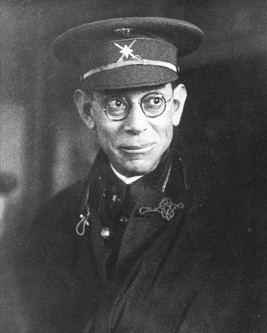The Spanish Civil War had raged for two and a half months, though the political confusion went back decades. In 1873, the experiment with the Spanish Republic began, but it crumbled to give a return to monarchy under Alfonso XIII fourteen years later. Military dictatorship kept the monarchy propped up for over forty years, but, in 1930, another overthrow gave birth to the Second Spanish Republic. A new constitution came in 1931, and a flurry of reforms gave relief to the great numbers of poor who had suffered under laws created in feudalism. With the election of 1933, the Spanish Confederation of the Autonomous Right won a near-majority of seats, but President Alcalá-Zamora ignored their political significance, instead turning to the Radical Republicans. The government seemed hijacked, and tension gave way to hostilities, which gave way to violence. Hundreds of assassinations, general strikes, bombings, and fires by arson crippled the country.
Elections in 1936 changed the government to a coalition of gradual reform under President Azaña. Extreme rightists refused gradual reform, calling for revolution and an end to Azaña, who had weakened the Spanish military with budget cuts. On July 17, a coup under monarchist and figurehead General José Sanjurjo began with Emilio Mola as its second-in-command. They called themselves the Nationalists and hoped to achieve a strong, central government like the fascists that had transformed Italy and Germany. While outlying areas such as the Canary Islands and Morocco fell quickly, the Republicans managed to contain the rebels and control the south, especially the major cities. In other areas, anarchists armed themselves, killing just about anybody who tried to subdue them.
With the coup botched, Spain descended into civil war. The Republicans, aided by Mexico and the USSR as well as international volunteers including some 2000 Americans, fought against the fascist Nationalists, who found support from Germany, Italy, Portugal, and major American companies such as General Motors, Ford, Firestone, and Texaco. The Nationalists convened in Burgos to determine a leader. Sanjurjo had died in a plane crash on July 20, just three days into the coup. Much attention was brought to Francisco Franco, and it looked as if he would gain official command after being named commander-in-chief on September 21. Hitler had named his support for Franco, but behind-the-scenes politicking established Mola as the leader of the Nationalists on October 1. Some had blamed his ineptitude for the failure of the coup, but promises he made to Hitler trumped the Fuhrer's trust in Franco. The power would thus be divided between Franco militarily and Mola for public affairs.
The arrangement seemed a success. Mola achieved great strides in propaganda, such as his creation of the term “fifth column” to describe the additional shadow-soldiers of Nationalist-sympathizers complementing his four columns of official soldiers. Franco, meanwhile, led the armies in a siege of Madrid, taking the city at the end of October. Announcements claimed that the war would be ended by Christmas.
In reality, the war dragged on through the winter and into the spring. Most of the Republicans had been dug out of cities in the southwest, but bitter guerrilla warfare slowed the Nationalist march through the countryside and, especially, mountains. Still, victory seemed inevitable, especially with the German Condor Legion bombing suspected Republican outposts.
On July 3, 1937, Mola died in a plane crash on his return to Vitoria. Franco inherited the mantle of Head of State, but Mola-supporters were suspicious. When evidence of assassination arose (though disputed), civil war broke out among the fascists. Hitler and Mussolini offered to mediate, but both sides refused to speak to the other without major conditions met. Finally, the Fuhrer and Il Dulce grew impatient and decided to back Franco. He managed to retake control of the Nationalists by force in 1939, but by then Italy and Germany had gone into their own war against the Allies.
The Republicans regrouped while the fascists had turned to in-fighting and gained material supplied by covert operations from the Allies. In their first campaign, they retook Madrid, causing Franco to call for help from Vichy France. As the French came into the war, so did Britain, the Soviet Union, and, later, the United States. Using Spain as a beachhead, the Allies stomped out the Nationalist soldiers in 1942 and moved through France toward Germany and across the Mediterranean to Italy.
After the war, Spain would solidify in its republic and achieve great prosperity with the rebuilding of Europe and 1960s. While still known for leftist as well as rightist fanatics, Spain serves as a model among the EU for republican brotherhood and regained glory.
–
In reality, Franco was publicly named Generalísimoas well as Jefe del Estado. The political and military unity strengthened his position but spread his command thin. When Mola died in the plane crash, Franco was suspected as plotting an assassination to solidify his rule, but the idea was never put forth seriously as it was most likely stormy weather. Once the Nationalists won the Civil War, Franco would stay out of World War II, citing demands too high for Hitler to meet upon Spain's entry as an ally. Spain became isolated, even from the UN, until 1955, then came under the influence of the United States in the Cold War. Spain would return to monarchy in 1978 after the death of Franco. A renewed military coup was attempted in 1982, but put down by King Juan Carlos.

No comments:
Post a Comment